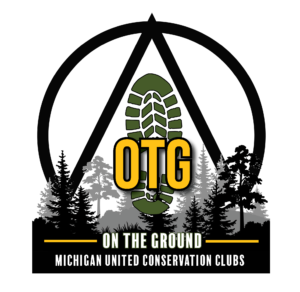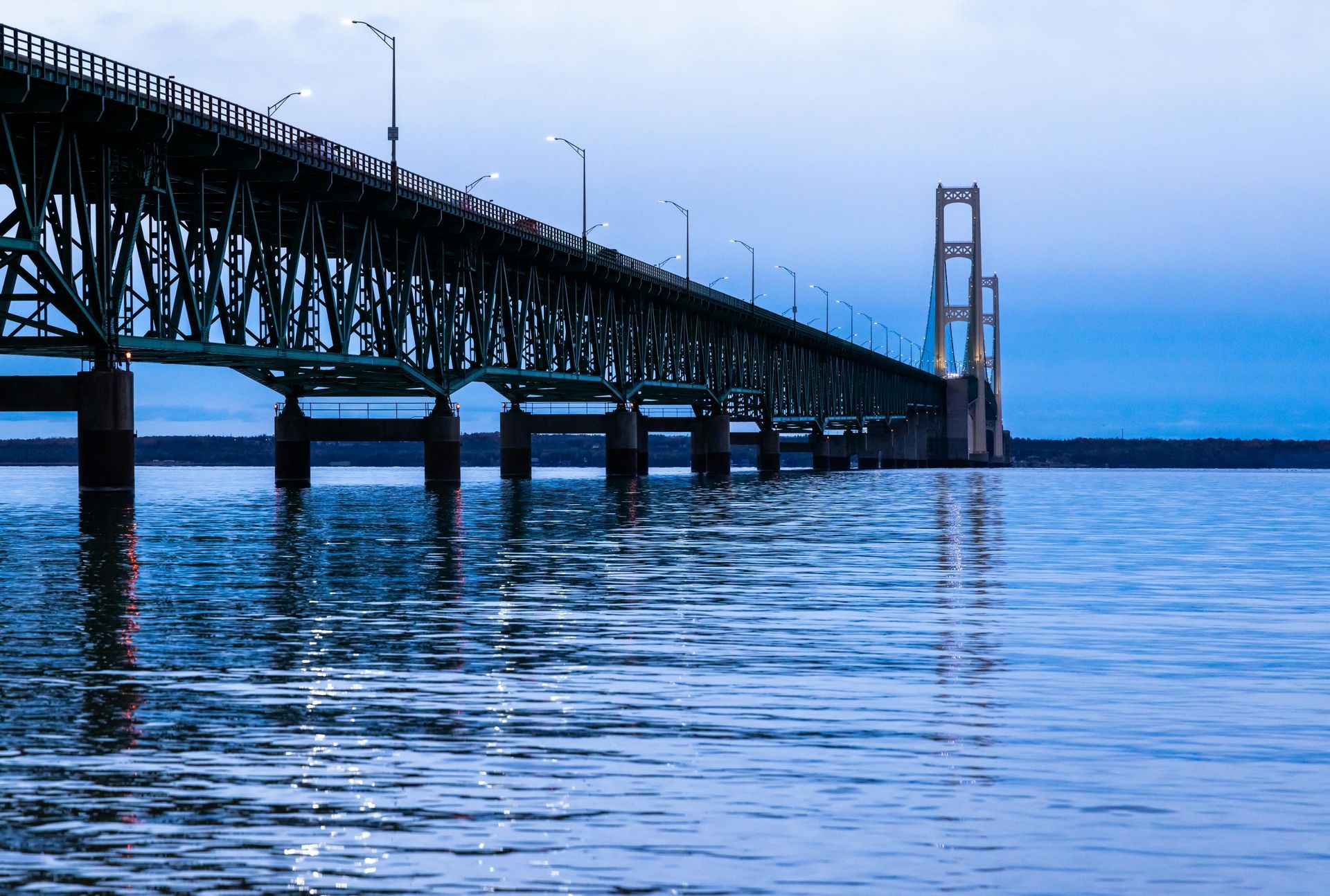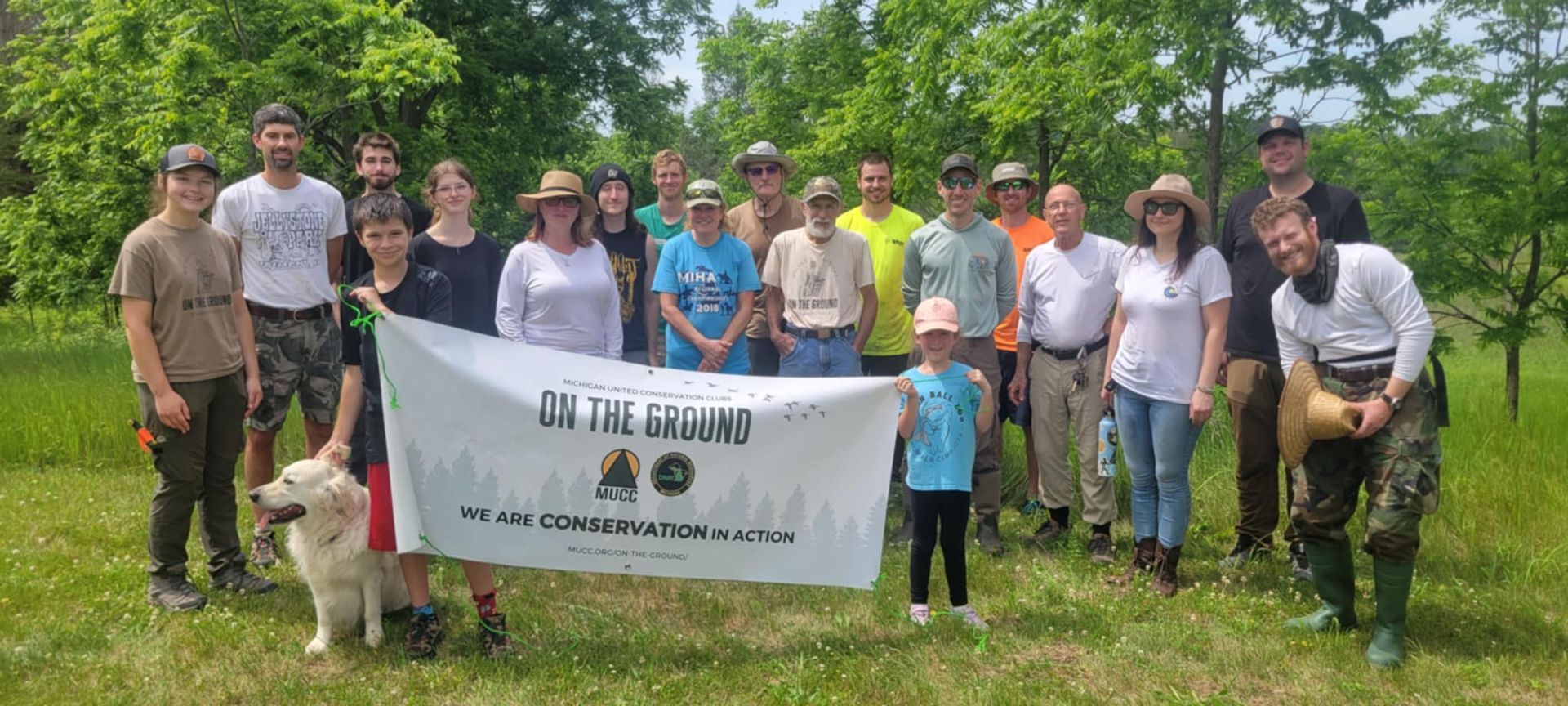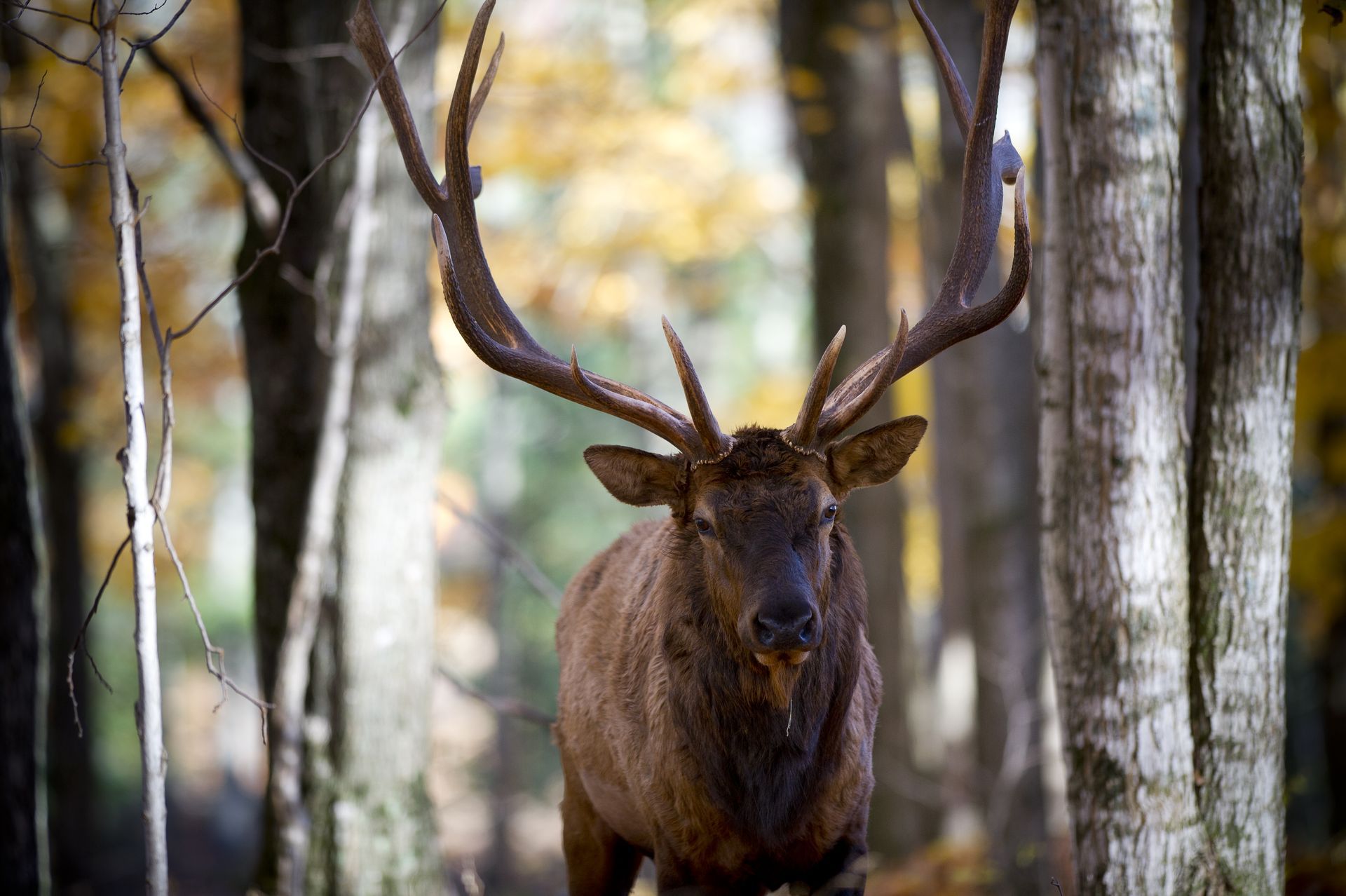On the Ground: 2020 Year in Review
 Despite limitations early in the field season due to COVID-19, the On the Ground (OTG) program was still able to improve habitat across the state of Michigan during the 2020 fiscal year (October 2019 through September 2020). While a typical field season usually includes 20-25 habitat projects, the OTG program hosted eight in 2020. Volunteers joined us across the Lower Peninsula to build rabbitat, plant native trees and wildflowers, remove invasive flora, install wood duck nest boxes and clear dikes of woody brush to improve stability and accessibility. To view a complete map of all of our project locations, click HERE
.
Despite limitations early in the field season due to COVID-19, the On the Ground (OTG) program was still able to improve habitat across the state of Michigan during the 2020 fiscal year (October 2019 through September 2020). While a typical field season usually includes 20-25 habitat projects, the OTG program hosted eight in 2020. Volunteers joined us across the Lower Peninsula to build rabbitat, plant native trees and wildflowers, remove invasive flora, install wood duck nest boxes and clear dikes of woody brush to improve stability and accessibility. To view a complete map of all of our project locations, click HERE
.
The OTG program has completed three projects this October, and we are happy to be back in the field. We are already beginning to plan events for 2021, so follow the OTG program at facebook.com/muccotg or at mucc.org/on-the-ground to stay updated on habitat improvement events near you.
Below is a synopsis of the eight projects completed over the course of the 2020 fiscal year. To read the blog associated with each event, please click the event title.
October 2019
On Wednesday, October 9, a group of 21 students and three chaperones from Lenawee Intermediate School District (Lenawee ISD) came out to the Michigan Out-of-Doors (MOOD) Youth Camp within the Waterloo Recreation Area in Chelsea to help improve native wildlife and pollinator habitat on camp property. A large section of the pollinator garden and sections along the walking trail at camp had become overrun by invasive autumn olive, and the students from Lenawee ISD utilized hand tools and teamwork to remove this aggressive invasive species. Students successfully removed the entire grove of autumn olive in the pollinator garden and an abundance of the invasive species growing along the trail.
On Wednesday, October 23, a total of 70 students, teachers and chaperones from the Grand Traverse Academy improved wildlife habitat in the Pere Marquette State Forest by planting native shrubs in select openings. The shrubs were placed along the “drip-edge” of the openings to capture water falling from the canopy of the established forest surrounding the openings and to leave room for future management to occur without disturbing the new shrubs.
On Tuesday, October 29 and Wednesday, October 30, students from Morrice Elementary came out to Rose Lake State Game Area. During two days of hard work, 54 Morrice Elementary fifth-grade students and chaperones were able to remove a major portion of invasive autumn olive to prepare a site for future enhancement and restoration efforts. The project site used to be home to the old DNR field office on Stoll Road until its recent removal, which has opened up the site to a potential grassland habitat restoration project and a user-access project involving the building of a viewing platform over Rose Lake.
February 2020
On Saturday, February 22, a total of 24 volunteers improved waterfowl habitat in the Maple River State Game Area. Volunteers from the Maple River Wildlife Association and other conservationists split into two groups to clear a dike of excessive woody brush and check old wood duck nest boxes and place new wood duck boxes in two units within the state game area. The woody brush was removed from the dike edge to preserve the dike structure, which can be compromised when growing root systems allow water to enter the structure and cause erosion. The other group of volunteers was allowed to check and clean-out old wood duck nest boxes and place new wood duck nest boxes in the wetland.
On Saturday, February 29, 27 volunteers from the Shiawassee Flats Citizens and Hunters Association and other conservationists gathered at the DNR St. Charles Field Office at the Shiawassee River State Game Area to volunteer for wood ducks. Volunteers split into two groups to place new wood duck nest boxes and clean out old nest boxes to prepare them for the upcoming nesting season at various locations within the state game area. As one of Michigan’s seven Wetland Wonders and one of the larger state game areas, the Shiawassee River State Game Area serves as critical habitat for an abundance of species.
March 2020
The OTG program returned to Clare County in the Gladwin Forest Management Unit to build small game brush piles (“rabbitat”) on public land in the Gladwin State Forest Area. A group of 14 volunteers met at the project site to limb and buck trees that were then used to assemble four new brush piles and impact five acres of habitat. These brush piles provide small game species with immediate shelter from predators or inclement weather, and serve as a location for wildlife nests and dens. The event location is known to boast quality habitat for ruffed grouse, woodcock, cottontail rabbit and many other game and nongame species.
September 2020
Four MUCC field team staff improved wildlife habitat within the Rose Lake State Game Area by removing invasive honeysuckle from the understory of a hickory and cherry forest. This was the first event hosted by the OTG program since March due to COVID-19 limitations. Following the mechanical removal of the woody brush using loppers and hand saws, the stumps were then treated chemically by MUCC Habitat Volunteer Coordinator Makhayla LaButte, who is certified as a commercial pesticide applicator. This forest stand stretches a total of 24 acres and has been visited in the past by the OTG program, and the removal of this aggressive invasive will have positive impacts on an abundance of native wildlife as the understory of the forest is given the opportunity to regenerate with native tree species.
The post On the Ground: 2020 Year in Review appeared first on Michigan United Conservation Clubs.
Recent Posts



